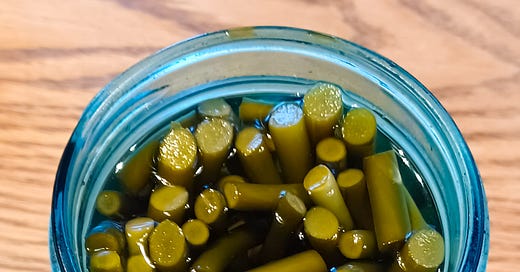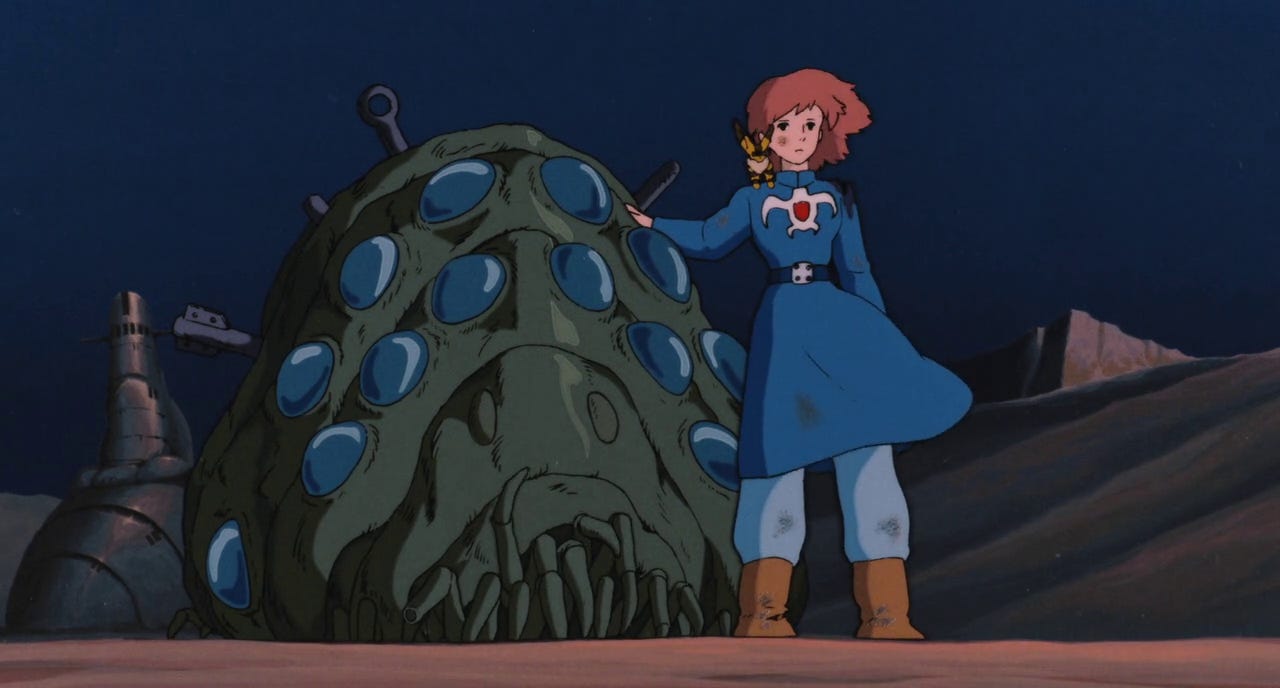In December I decided it was time to break open a jar of the garlic scapes I pickled back in June. The first garlicky, vinegar-sharp bite overwhelmed me with emotion. I tasted the heat of the early summer sunshine, I felt my excitement for the ephemeral season of the garlic scape, the swirly, tender flower stems that emerge from the garlic bulb, their time short-lived and so very precious. I usually plant a whole bed of garlic and for that couple weeks I put fresh scapes on everything I eat, adoring their slightly milder swirly-curling allium tendrils. This year I pickled the rest, and with that first bite of June I felt a deep and all-consuming love - for the earth and the soil and the sun that grew the plant, for the friend who gifted me a head of this garlic for seed as I drove away from Atlanta in 2019, and for June Mere, who took some time to put aside this gift so December Mere could enjoy it in the deep cold of winter. I felt loved and cared for in a particular way that is not altogether common.
Preserving the bounty of the harvest for the lean times is obviously an ancient practice, and people have employed many strategies for this over millenia and all over the world: smoking, salting, fermenting, curing, drying, and so on. For me, canning preserves is a way that I feel connected to my direct ancestors - my dad’s parents, who were canny (ha, get it?) experts in putting food by. My grandfather was a Presbyterian minister in Vermont’s rural “northeast kingdom;” a position where it helped a lot to have a huge garden to feed the family year-round. My dad describes the seasonal motion of two whirling dervishes tornado-ing the entire kitchen in the 150+ year-old house for days at a time to put up the garden’s bounty, employing both the gas stove and the enormous cast-iron wood stove with its roaring inner fire to keep all the various pots boiling, both my grandparents working furiously in sync.
Apparently some of the action took place in an unheated pantry off the back corner of the kitchen, which my grandmother, hilariously, referred to as “the glory hole” - a small detail that makes me both miss her something fierce and also feel very related to her. That sense of humor definitely got passed down! Now every time I’m canning tomatoes or sweet corn or pickled okra I say I’m working in the glory hole and I hope she’d laugh approvingly.
I was absolutely terrified of botulism when I started out canning, with good reason I think. Botulism, as you may know, is a food-borne bacteria that thrives specifically in environments without oxygen, such as an incorrectly processed can of vegetables, and it can kill you (fun fact: it’s also what’s in Botox! Weird world!). In 2016 I took a day-long introductory class on how to can correctly in order to prevent the accidental deaths of myself and anyone I might lovingly share food with. I saw the headlines flashing:
Murder in a Mason Jar! How One Asshole Killed Innocent Friends Who Were Just Trying Her Dilly Beans to Be Nice
I learned a reassuring and helpful piece of information which I will pass along to you: pH is an important factor to consider when you’re doing home canning. Botulism can’t grow past a certain level of acidity - 4.6 and under to be exact. This means that foods like any fruit or pickle can be canned in a simple water bath canner rather than needing a whole pressure canning rig, which is its own whole piece of equipment and process. Tomatoes - the thing I can by far the most! - are pretty close to the 4.6 pH limit, so the instructor recommended adding a tablespoon of lemon juice at the bottom of the jar just to be safe.

If you’re interested in canning but feel intimidated by getting started I would absolutely recommend taking a class. I don’t think the organization that I found mine through exists anymore unfortunately, but one good starting place is the National Center for Home Food Preservation. While there’s a lot of great information available for free on YouTube etc, just be aware that there are specific existing USDA safety guidelines that are in place to make sure the food you’re putting by won’t go to waste by being spoiled, or worse! Your local food coop might also be a resource to check out. Start with water bath canning (low pH foods only). To start out (and my current set-up to this day) I got a tall pot at the Goodwill and zip-tied some Ball jar bands together to keep the glass jars from touching the bottom. Then I spent about $9 on some canning-specific tools that were findable at the grocery store. As the introduction to my copy of Putting Food By says: “anyone who can ride herd on a backyard gas barbecue can follow the ways to preserve food safely.”
One Action Item & One Unsolicited Recommendation
If you, like me, are horrified by the wolf and coyote killing contests that happen annually on federal land (which, emphatically, do not effectively reduce the numbers of these important predators - and even if they did, these species are keystones in the ecological food chain and deserve to have a place in this world), you can sign this petition from Project Coyote: petition, and follow Rewilding the Heartland on Instagram for more information.
With the longer nights, my partner and I have been watching a lot of movies and we recently returned to an old favorite. Have you guys seen Nausicaå of the Valley of the Wind? It’s an early Miyazaki film, less famous than gems like Spirited Away or Princess Mononoke. It has some themes in common with Princess Mononoke especially, as well as the 90s classic Ferngully that I grew up with, but it is much, much weirder (in the best way), complete with a soundtrack like an 80s videogame.
It takes place 1,000 years in the future, after basically the entire world has been poisoned, and follows a young woman who fights to put humanity on a path that is ecologically sound, coexisting and collaborating with nonhuman species that appear gross and terrifying at first. It makes me think of Joanna Macy encouraging us to “be in league with the beings of the future” when we act - to imagine that they are all around us all of the time. In World as Lover, World as Self she says, “In the mystery of time, the bonds we forge to future beings can bring them into our lives in ways unforseen in the linear view.” And I think Nausicaa is a movie that points in that direction.
If you watch it, let me know what you think! And if you have a harvest-preserving practice, feel free to drop a comment and share.
Thanks for being here. See ya next Wednesday.
Mere





